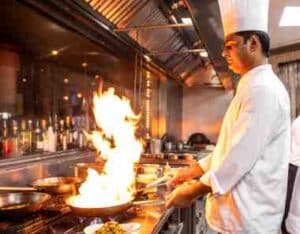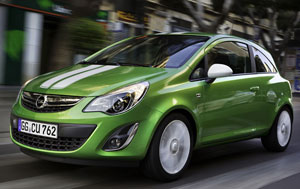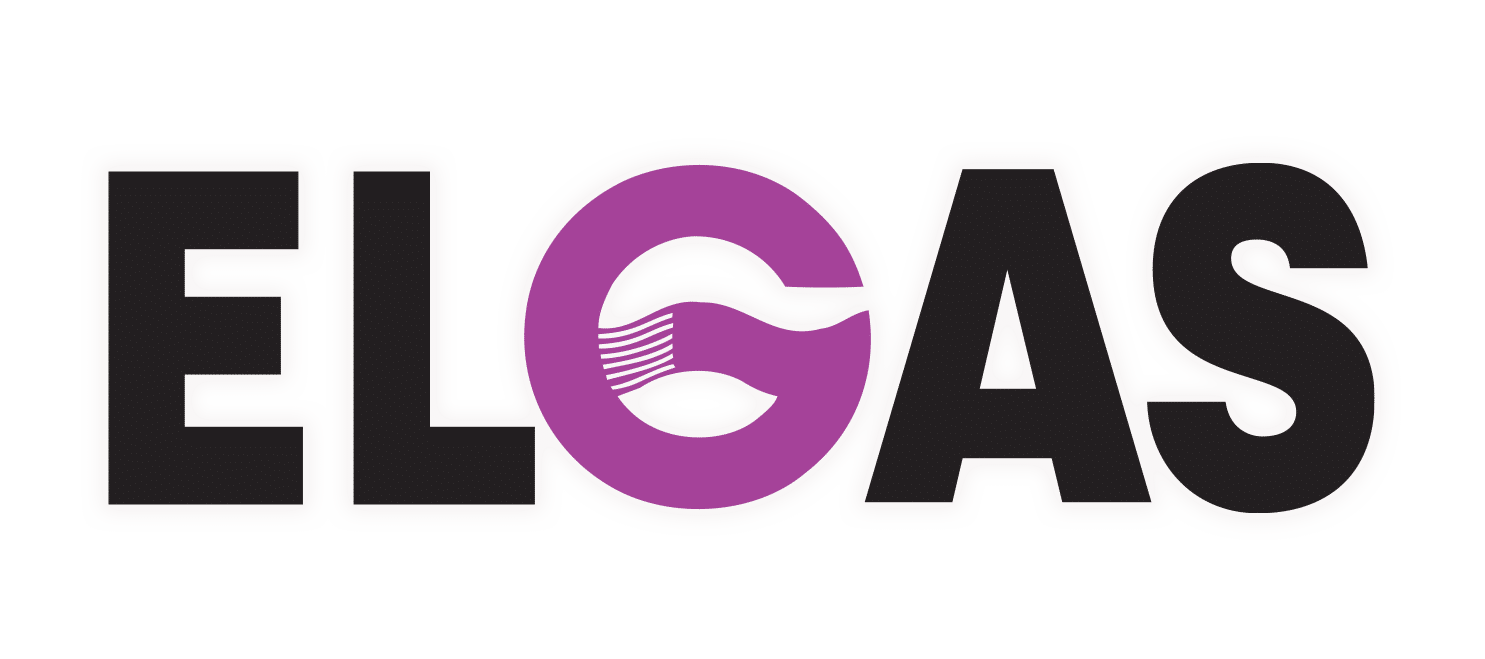What is LPG Used For? LPG Applications

LPG – Liquefied Petroleum Gas – is used for hundreds, if not thousands, of applications.
LPG (propane) is used as a fuel for many residential, commercial and agricultural heat applications, including cooking, hot water systems and heating.
It is also employed as a propellant, refrigerant, vehicle fuel and petrochemical feedstock.
And there are many more ways to use LPG…
LPG Uses – Summary
The most common uses of LPG are as a fuel gas in:
- LPG for Home: Gas heating, gas cooking appliances, and gas hot water heaters.
- LPG Car: Used as a fuel gas (Autogas) for LPG cars, either factory built or LPG conversion.
- LPG Commercial Gas: Used for forklift gas, commercial boilers, kilns, ovens and other heating and drying applications.
- LPG for Agricultural: Livestock and greenhouse heat, grain drying, dairy hot water, flame weeding, and more.
What is LPG Used For – LPG Applications
|
What is LPG – Propane Used For?
LPG Applications
|
|
| General Area of Use | Specific Applications |
| In Homes | Cooking, Hot Water, Heating, BBQ |
| Electricity Generation | Generators, Gas Turbines, Co-gen & Tri-Gen |
| Leisure | Boats, Recreational Vehicles |
| Camping | Caravan Parks, Camp Grounds, Camping |
| Hospitality Industry | Hotels, Restaurants, Clubs, Pubs |
| Transportation | Autogas, Taxis, Buses, Commercial Vehicles |
| Business & Industry | Boilers, Forklifts, Ovens, Furnaces |
| Agriculture | Crop Drying, Greenhouses, Flame Weeding |
| Livestock | Dairies, Poultry Sheds, Piggeries |
| Fun | Hot Air Balloons, Ice Rink Resurfacing |
| And More | Many, Many More… |
LPG Fuel – Uses in the Home
 LPG fuel, comprised of propane and/or butane, is commonly used in cooking, heating, hot water and autogas.
LPG fuel, comprised of propane and/or butane, is commonly used in cooking, heating, hot water and autogas.
LPG is a hydrocarbon fuel that can be compressed into a liquid for storage in steel vessels.
LPG fuel for homes is typically supplied in LPG 45kg gas bottles.
LPG for Cooking
There are many types of cooking appliances that use LPG.
The most common are gas cooktops and ovens.
Gas cooktops are the preferred choice of professional as well as home chefs.
Outdoor cooking is also a popular application.
Everyone is familiar with LPG used for gas BBQs.
There are also LPG gas pizza ovens, spit roasters and smokers.
LPG for Heating
 The two most common LPG heaters types are ones that use LPG to generate radiant heat and convection heat.
The two most common LPG heaters types are ones that use LPG to generate radiant heat and convection heat.
LPG heaters can be portable, in-built consoles or an entire ducted heating system built into the home.
One of the most spectacular uses of LPG is for gas fireplaces & gas log fires.
These units use LPG to provide a rare mixture of beauty and warmth.
Gas fireplaces and gas log fire heaters can add to the ambiance of any room while supplying welcoming warmth to your entire home.
Although not common in Australia, hydronic heating is popular in Europe.
The LPG is used to heat the water that travels through a closed pipe system to radiators.
The radiators are positioned all the way through the home.
The hot water can also be used to heat in-floor systems, which provides heat that radiates upward.
LPG for Hot Water
LPG hot water systems are very reliable and efficient.
In Australia, we have the traditional storage tank LPG hot water heaters and the tankless continuous flow LPG hot water systems.
Tankless continuous flow LPG gas hot water heater systems provide hot water on demand whenever you turn on the tap and you save energy, too.
These units only heat the water as it passes through.
LPG for Backup Generators
Using LPG to fuel backup generators has one really great advantage. LPG never “goes off” like diesel and petrol.
You can store LPG almost indefinitely without any degradation of the fuel.
LPG backup generators are very popular in the USA.
LPG for Off the Grid Generation
People who live off-the-grid (OTG) use LPG to generate their electricity.
LPG also supplements renewable solar energy sources, which are dependent on sunlight and weather.
New cogeneration units are now on the market that also produce heat in addition to electricity.
These are known as Micro Combined Heat and Power (micro-CHP or MCHP) for the smaller sized units that are typically used in homes.
LPG Uses for Leisure
LPG for Caravans, Boats & Recreational Vehicles
Most caravans use LPG gas bottles for their cooking and heating.
Many also have an LPG powered refrigerator.
The same is true for boats and other recreational vehicles.
There are even non-metallic gas bottles made of composite materials.
These solve the rust problems experienced, by boaters, on salt water.
LPG is also used with small portable generators for all types of recreational activities.
LPG is perfect for all of these applications because of its portability and almost universal availability.
LPG for Hot Air Balloons
Modern balloonists have two choice to get their balloons airborne — helium or hot air.
As helium is quite expensive to use on a recreational basis, hot air is the method of choice and LPG is the fuel of choice.
Hot air balloons are probably the biggest leisure users of LPG, as they heat the air within the balloon air envelope.
A balloon would typically have 2, 3 or 4 burners.
The burners themselves can either hang from the bottom of the envelope or be mounted to framework on the top of the basket (gondola).
The balloon pilot operates a valve to control the burners and how much heat is added to the air within the envelope.
LPG for Camp Grounds and Caravan Parks
Given that they are typically in a remote location, LPG is popular with camp ground and caravan park operators.
Hot water for communal shower blocks and laundries are the primary LPG applications, along with powering shared kitchens.
LPG for Camping
Camping gas bottles are small, portable and can power an assortment of camping gear.
Leisure sized cookers use LPG for everything from a small camping stove, which can fit in a backpack, to fueling a kitchen in a boat or recreational vehicle.
Gas lights are one of the oldest uses for LPG and they are still used by campers today.
There are also small camping heaters that mount directly to the gas bottle, as well as free standing models.
LPG for Ice Skating
If you ice skate, you probably have LPG to thank for the nice smooth ice at the ice rink.
One of the most unusual leisure uses for LPG is to power ice resurfacing machines, as used at ice skating rinks.
They are the big machines that motor around an ice rink making rough ice into something almost as smooth as glass.
For example, the Zamboni® ice resurfacing machines uses two LPG forklift cylinders as their gas supply.
At the front of the machine, a sharp blade shaves the upper surface off of the ice.
Warm water is dispensed out of the back of the machine, spread by a towed towel, resulting in a smooth ice surface.
LPG for Golf
Commercial lawnmowers — the kind that are used on golf courses — use LPG in forklift cylinders.
They are perfect for golf courses because they are used in close proximity to the golfers, who appreciate the low noise and emissions.
There is also no risk of a fuel spill that could contaminate the course.
LPG for Mosquito Control
There are even mosquito traps that use LPG to generate CO2, heat and moisture, all things that mosquitos find attractive.
The mosquitos are subsequently trapped inside the unit, making camping a whole lot more enjoyable.
LPG Uses in the Hospitality Industry
LPG for Hotels
LPG ensures that you never have customer complaints about lack of hot water, as continuous flow units never run out.
No guest complaints about noise either, as LPG hot water systems are quiet.
The hot water is also used for the hotel laundry, with the daily mass of towels and bed linens that need to be cleaned.
The hotel restaurant would also use LPG for cooking and hot water.
LPG for Restaurants

Most professional chefs prefer to cook with gas.
It’s very responsive which is particularly important for cooking, where instant heat and fingertip-control are so important.
LPG gives them that option no matter where the restaurant is located.
LPG for Clubs and Pubs
Clubs and pubs use LPG much like restaurants.
Their kitchens rely on LPG for cooking and hot water for dishwashing.
Clubs and pubs frequently have outdoor trading areas, as well.
LPG outdoor heaters allow them to extend the useful season of these outdoor areas, increasing seating and revenues.
Most important, it increases customer comfort.
LPG Uses for Power
LPG for Primary Electricity Generation
As previously mentioned, LPG can be used to fuel electric generators for residential applications.
In remote areas, LPG is used in combination with diesel fuel to power larger generators.
The LPG replaces some of the diesel fuel used to run the engine and saves money for the operator.
Farm irrigation pumps and mining camps are two of the more common applications for these larger generation units.
LPG for Cogeneration & Tri-Generation
Combined Heat and Power (CHP) Systems are used where both heat and electricity are required.
This process is called cogeneration where heat and electricity are both produced simultaneously using a single fuel source and system.
Tri-Generation is the newest innovation. Combined Cooling, Heat & Power (CCHP) uses LPG in the simultaneous production of cooling, heat and electricity from a single system and fuel source.
LPG Uses in Transportation
LPG for Autogas
 LPG used to power vehicles is typically referred to as “autogas”.
LPG used to power vehicles is typically referred to as “autogas”.
Autogas is a bit of a misnomer, as it isn’t just used for cars. LPG is used to fuel commercial vehicles, as well.
With an octane rating over 100, LPG can be used to substitute for petrol in virtually all petrol powered vehicles. Autogas conversions are very common and are often a bi-fuel system.
The vehicles can change back and forth between fuels with the flick of a switch.
LPG provides a nearly 50% reduction in greenhouse gas emissions and 80% reduction in carbon monoxide as compared to conventional gasoline.
It is estimated that there are 23 Million LPG powered vehicles worldwide.
LPG for Buses

In the USA, it has become increasingly popular to use LPG to fuel school buses.
The ubiquitous yellow buses are seen everywhere in the US.
The operating school systems benefit from reduced fuel costs and the community gets cleaner air.
LPG for Large Trucks & Engines
As with large generators, large trucks can use LPG in combination with diesel to save money.
This practice is very literally known as “diesel substitution”.
This substitution can range from 15% to 50%, with a Diesel – LPG fuel mix.
The benefits of using LPG in transportation are a reduction in greenhouse gas emissions and reduced operating costs, as LPG is less expensive than either petrol or diesel fuel, in most countries.
LPG for Asphalt or Bitumen Road Building
Roads construction is a slightly different transportation application for LPG.
LPG is used in the production of asphalt/bitumen from petroleum. This is, in turn, used to surface roads.
It is also used to power the large asphalt road plants that apply the asphalt to the roadway surface.
LPG Uses in Business & Industry
LPG for Boilers
The most common use for LPG, in industry, is to fuel boilers to generate steam and hot water.
LPG can be used with either fire-tube or water-tube boilers.
The steam is then used in a myriad of processes.
LPG for Forklifts
 Whilst not a primary industrial process, LPG use in forklifts is a major consumer of LPG and is essential to keep business and commerce moving.
Whilst not a primary industrial process, LPG use in forklifts is a major consumer of LPG and is essential to keep business and commerce moving.
LPG forklifts compare favourably to either the electric or diesel alternatives.
LPG forklifts are capable of maintaining 100% power throughout the day.
LPG forklifts can also be used both indoors and outdoors, unlike their electric and diesel counterparts.
The initial capital cost is also usually lower when compared with either electric or diesel forklifts.
LPG for Direct Heat Applications
 LPG has accurate temperature control and clean combustion, with no carbon deposition.
LPG has accurate temperature control and clean combustion, with no carbon deposition.
These are both advantageous for the production of many products.
Kilns for brick & tile manufacturing, the ceramics industry and sanitaryware production all use LPG.
Waste heat is also recycled to use in the driers, which remove moisture before firing.
Industrial ovens for the food industry, including baking and meat preparation, are also very common LPG applications.
The clean burning nature of LPG is crucial to food processing.
There are also many other industrial processes that use ovens for heating and curing.
LPG for Drying
LPG is used to generate heat for all kinds of drying applications.
Bricks, paper, concrete, food and textiles are just some of the industries where LPG is used for drying.
LPG for Metals
Metals are an obvious application for LPG.
Metal furnaces, casting, moldings, welding, flame cutting and soldering are just some of the uses of LPG that involve molten metals.
LPG is also used in the annealing process.
LPG for Commercial, Hotel and Hospital Laundries
.jpg)
Large scale washing and drying of clothes, towels and bedding requires a lot of energy.
LPG is used to heat the water and power the dryers.
It can also be scaled up to accommodate even the largest of laundries.
It provides large quantities of hot water supply over a short period of time.
Users get a constant supply of on-demand hot water without storage tanks
LPG for Glass
LPG is used for small and large scale glass production.
Small LPG kilns are used by artists for glass blowing and to make decorative glass.
Larger automated kilns are used for commercial glassware production.
Large float glass production, to produce flat glass, can also be fueled by LPG.
LPG is also used for making tempered or safety glass by way of a secondary heat process.
LPG Propellant – LPG Aerosol
LPG is used as a propellant gas in various aerosol products including cosmetics, paints and pesticides.
LPG is naturally colourless and odourless, making it ideal for propellant use.
Butane is typically preferred over Propane for propellant applications. Both are considered to be LPG.
LPG was chosen to replace CFC gases as it does not contain any ozone depleting substances, making it more environmentally safe.
LPG as a Refrigerant – LPG Gas Refrigerator – r600a Isobutane Refrigerant – Propane Refrigerant r290
Propane, butane and isobutane are all used in refrigeration but for different applications, including for an LPG gas refrigerator.
They have different refrigeration uses because of their different thermodynamic properties.
They are used to replace the harmful CFC refrigerants, such as R-12, R-22, R-134a.
High purity propane (>97.5%) is used as a refrigerant, known as propane refrigerant r290.
Both r600 butane refrigerant and r600a isobutane refrigerant are also used.
The three gases can also be mixed to achieve different properties, such as with R-290a, a mixture of isobutane and propane.
Just as with propellants, LPG gases also replaced chlorofluorocarbons (CFCs) as refrigerants, to preserve the ozone layer.
LPG for Cremation
Whilst not a subject people like to talk about, many people prefer cremation over burial or entombment.
LPG provides clean heat and the higher burning temperatures that are required for cremation.
LPG Uses in Agriculture
LPG for Crop & Produce Drying
Crop drying is one of the most common use for LPG in agriculture.
Moisture must be removed from agricultural products to prevent spoilage.
Grains, nuts, tobacco and dried fruit are just some examples of agricultural products dried using LPG.
LPG for Greenhouses
The obvious reason LPG is used for greenhouses is to keep them warm in colder weather.
A typical blower heater is shown above.
The less obvious reason is for the CO2 enrichment of the greenhouse atmosphere to improve plant growth.
LPG for Dairy Farmers
Dairy farmers require considerable amounts of hot water to run their dairies.
LPG can be used to produce large quantities of hot water on a continuous basis, to meet their needs.
It is also used to process milk products in larger processing facilities for activities like pasteurisation and production of dried milk products.
LPG for Bird and Animal Habitats

LPG is used for space heating in poultry sheds, piggeries and brooders to maintain healthy temperatures for optimal growth.
Direct flame application is also used to kill bugs and parasites in the dirt floors of the animal and bird enclosures.
This technique can sanitise the soil without the use of harmful chemicals.
LPG for Irrigation

The need for irrigation in agriculture requires no explanation.
However, to save on energy costs, farmers are using LPG to fuel their large irrigation pumps, often in combination with diesel.
In most countries, LPG is more cost effective than either petrol or diesel.
LPG for Flame Weeding
LPG is used for non-chemical weed control.
LPG flame weeding uses a direct flame or infrared burner to vaporise the water in the plant.
The weed is exposed to sufficient heat to be dead within three days.
Flame weeding systems range from large tractor mounted units, with sizable LPG supply tanks, to small handheld units for spot weed control.
Final Thoughts on the Uses of LPG
There are many, many more uses for LPG than listed above.
Cleaning, disinfecting, roofing, commercial car washes and petrochemical feedstock are just a few.
LPG is an amazingly versatile and transportable fuel that is an integral part of our everyday lives.
- BBQ – Gas and Charcoal BBQ Features – Charcoal BBQ vs Gas BBQ Comparison - March 31, 2025
- GPL Gas (GPL Fuel) – GLP Gas – LPG Gasul: GLP – GPL Station Near Me - March 26, 2025
- Think LPG When Building a New Home - February 26, 2025
Steve Reynolds
Technical Consultant
Steve Reynolds is a leading expert in the LPG industry with over 22 years of experience. As part of the national management team at ELGAS, Steve ensures the safe and efficient storage, handling, and transportation of LPG. He serves as the lead investigator for incidents and collaborates with authorities on industry developments.
Steve is a technical advisor to Standards Australia and Gas Energy Australia (GEA), and an active member of the World LPG Association (WLPGA), contributing to global standards and technical reviews. He holds a BSc. (Hons) in Industrial Chemistry from UNSW and has held senior safety and technical roles at ELGAS, making him a trusted authority in LPG safety and standards.

.png)





